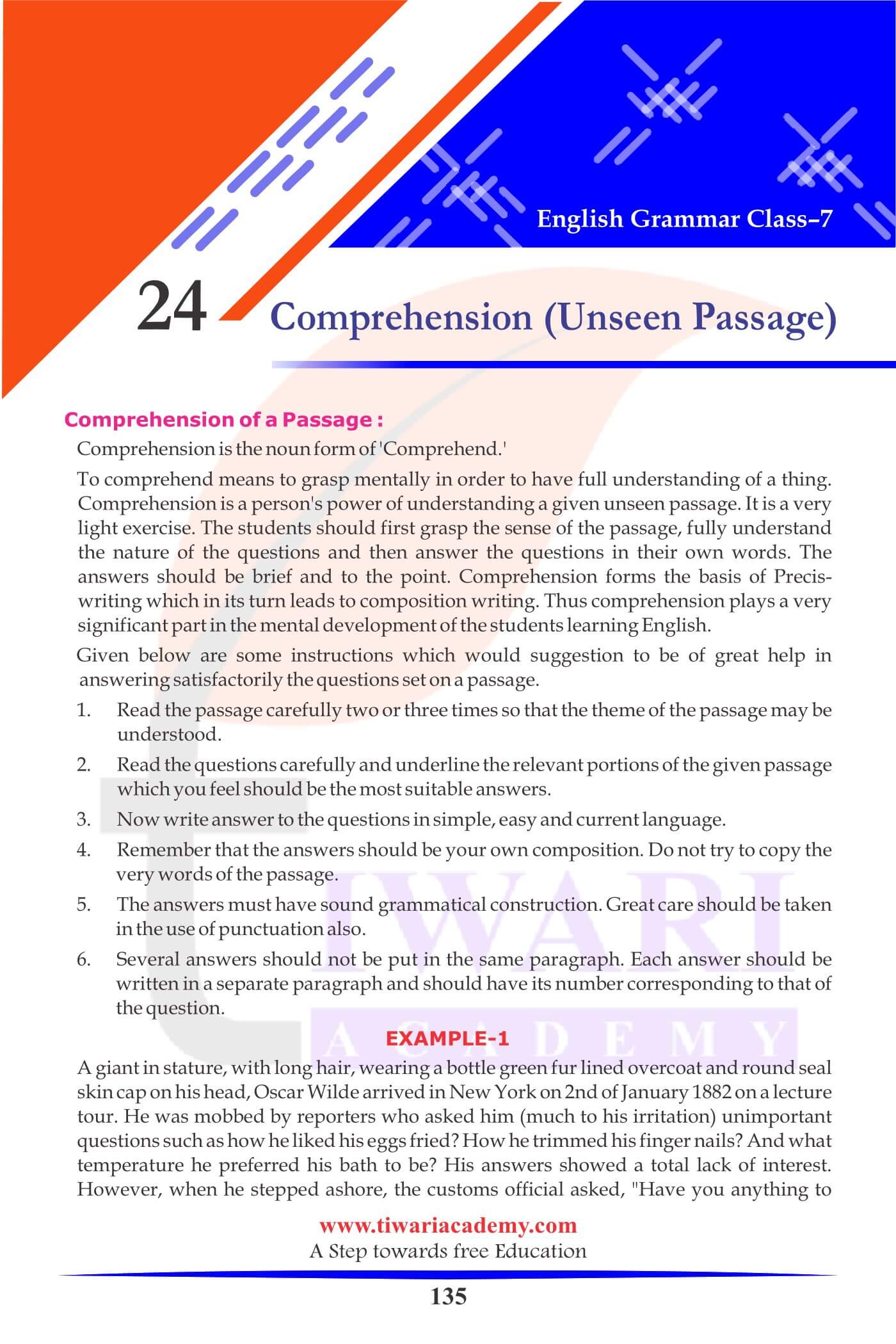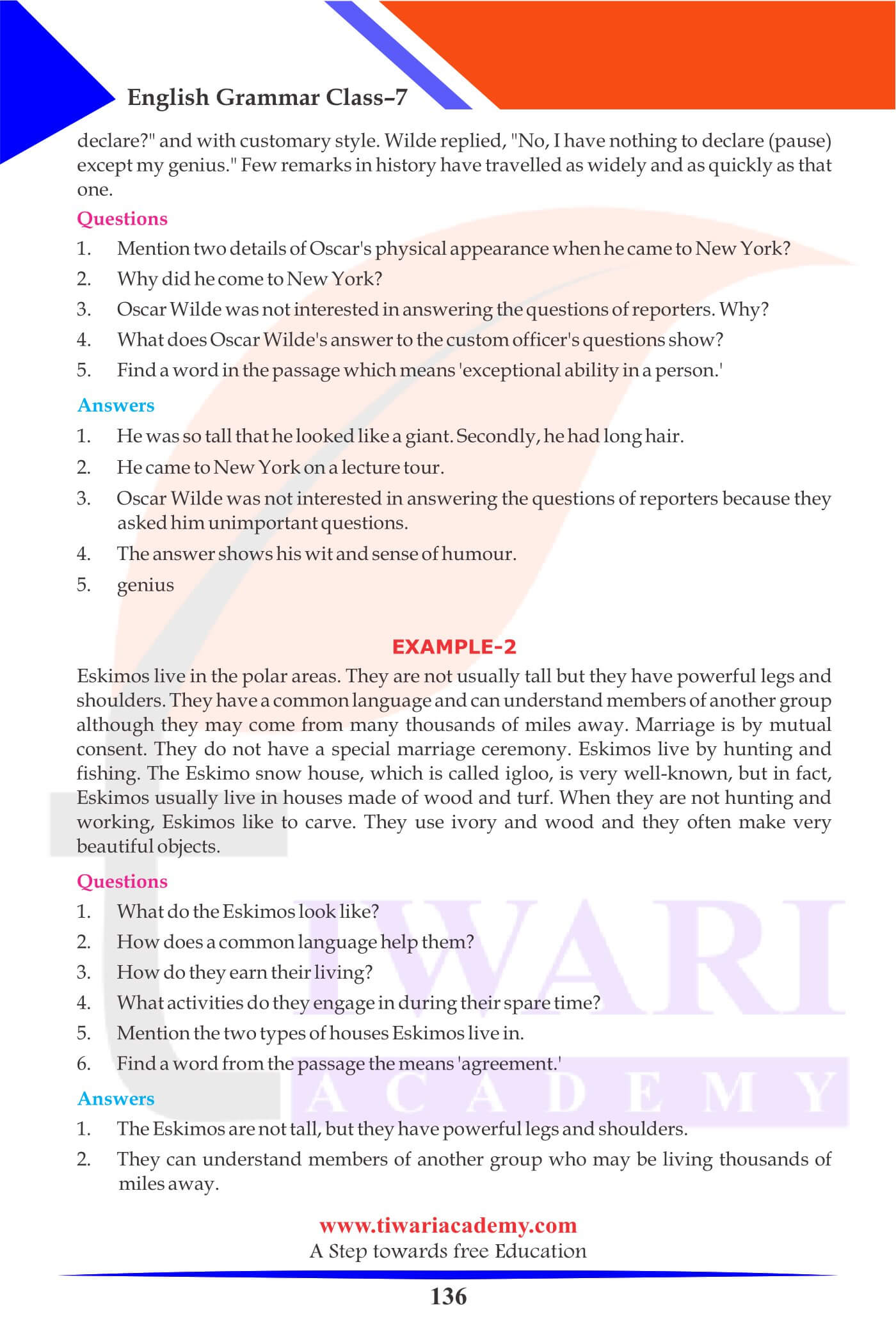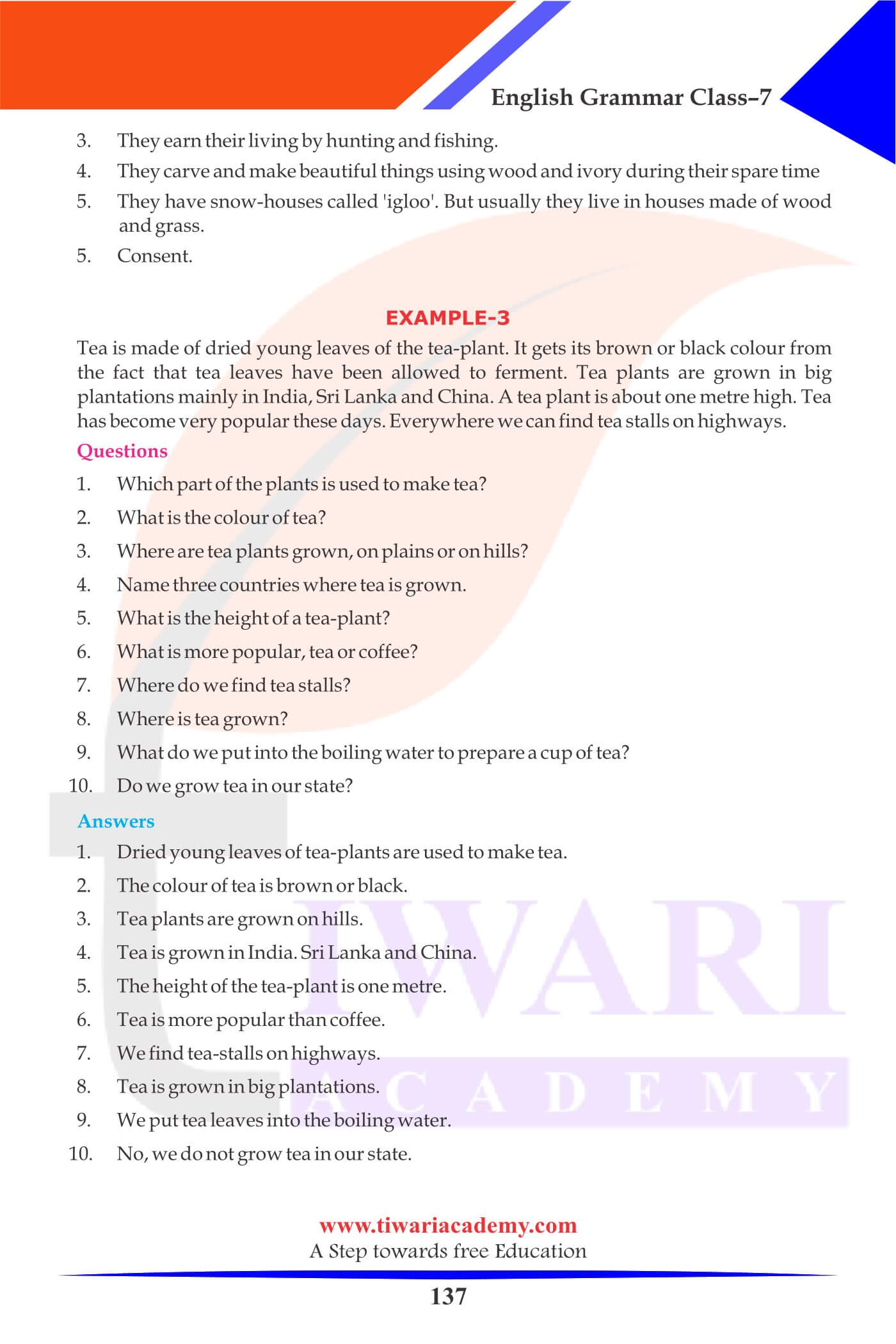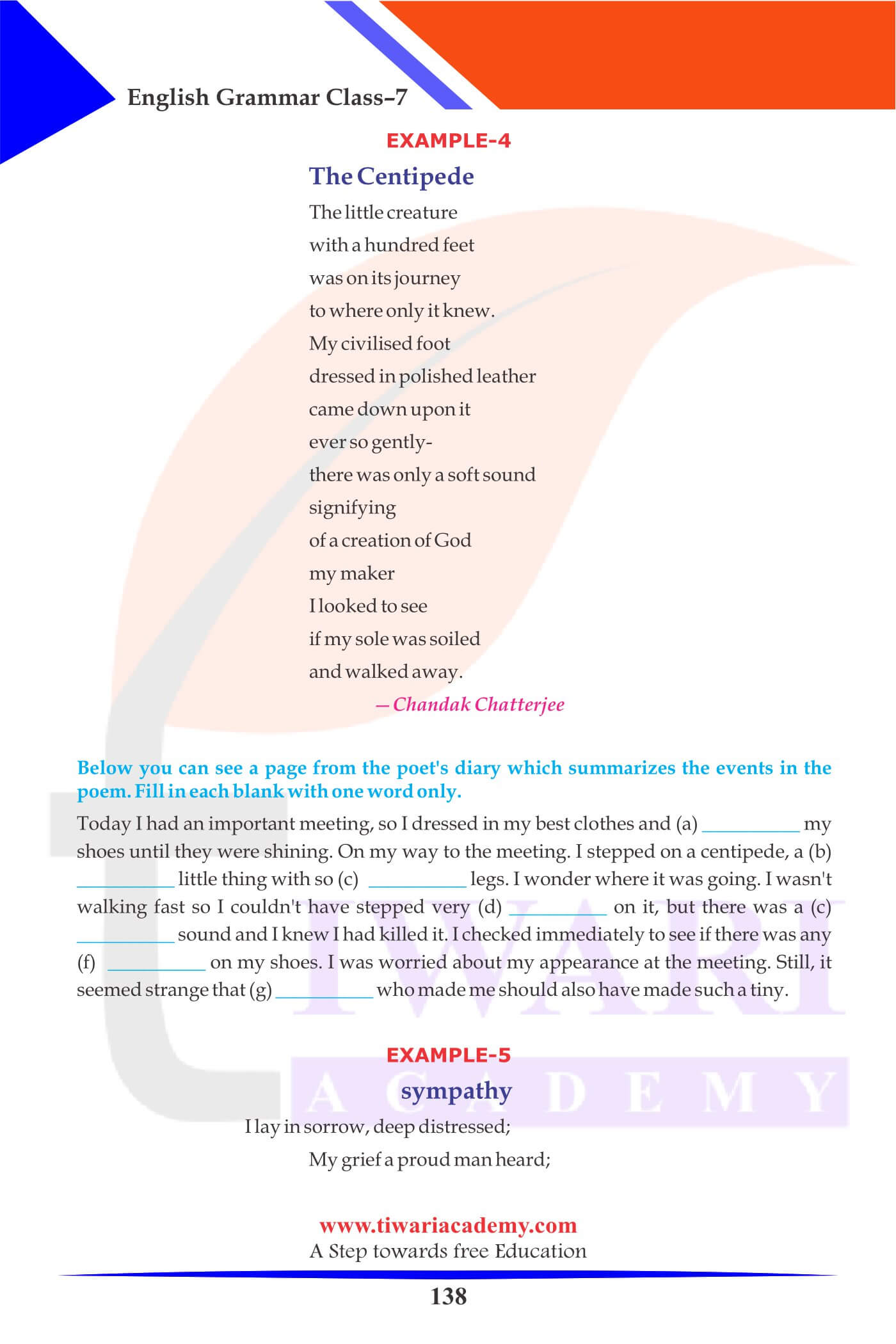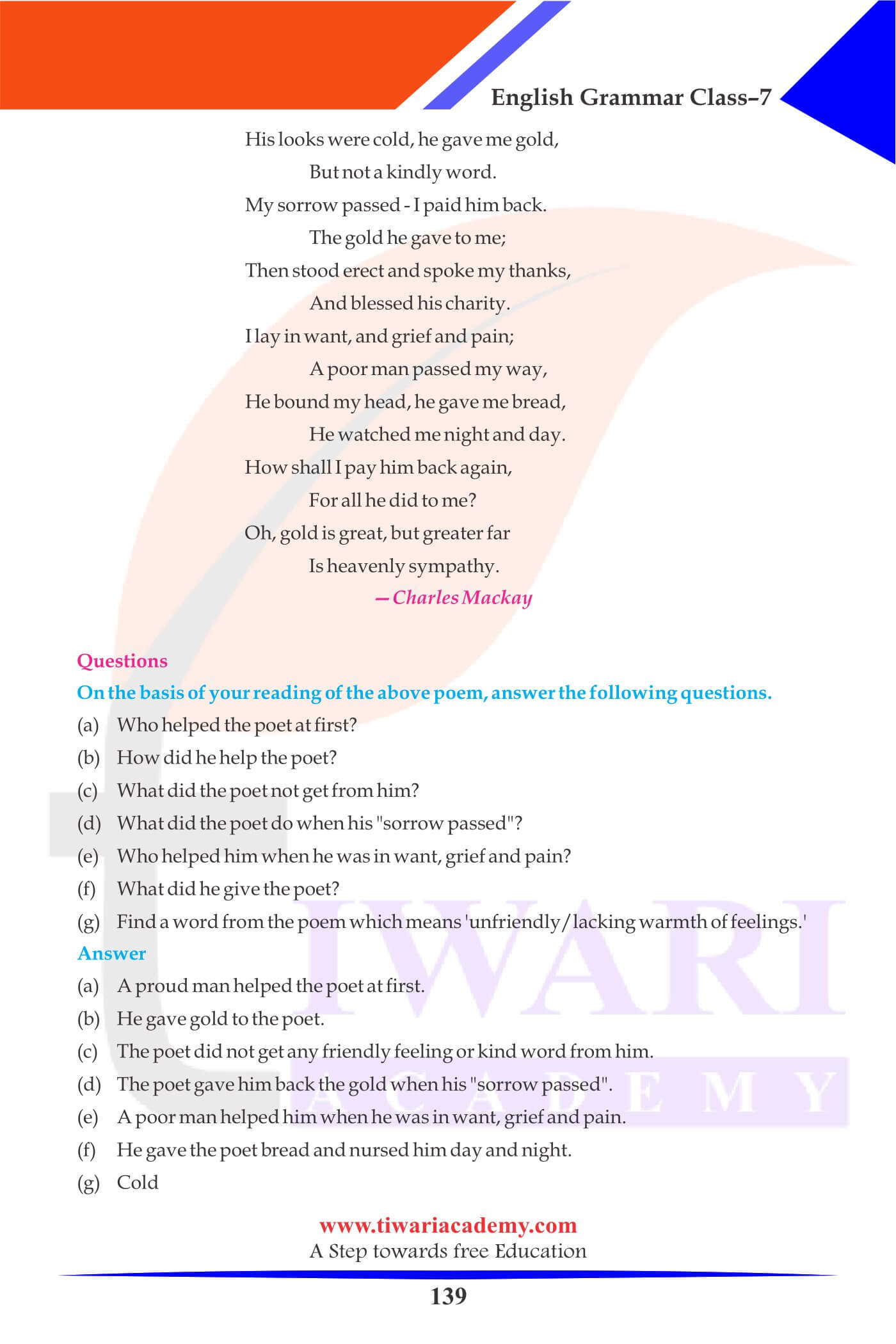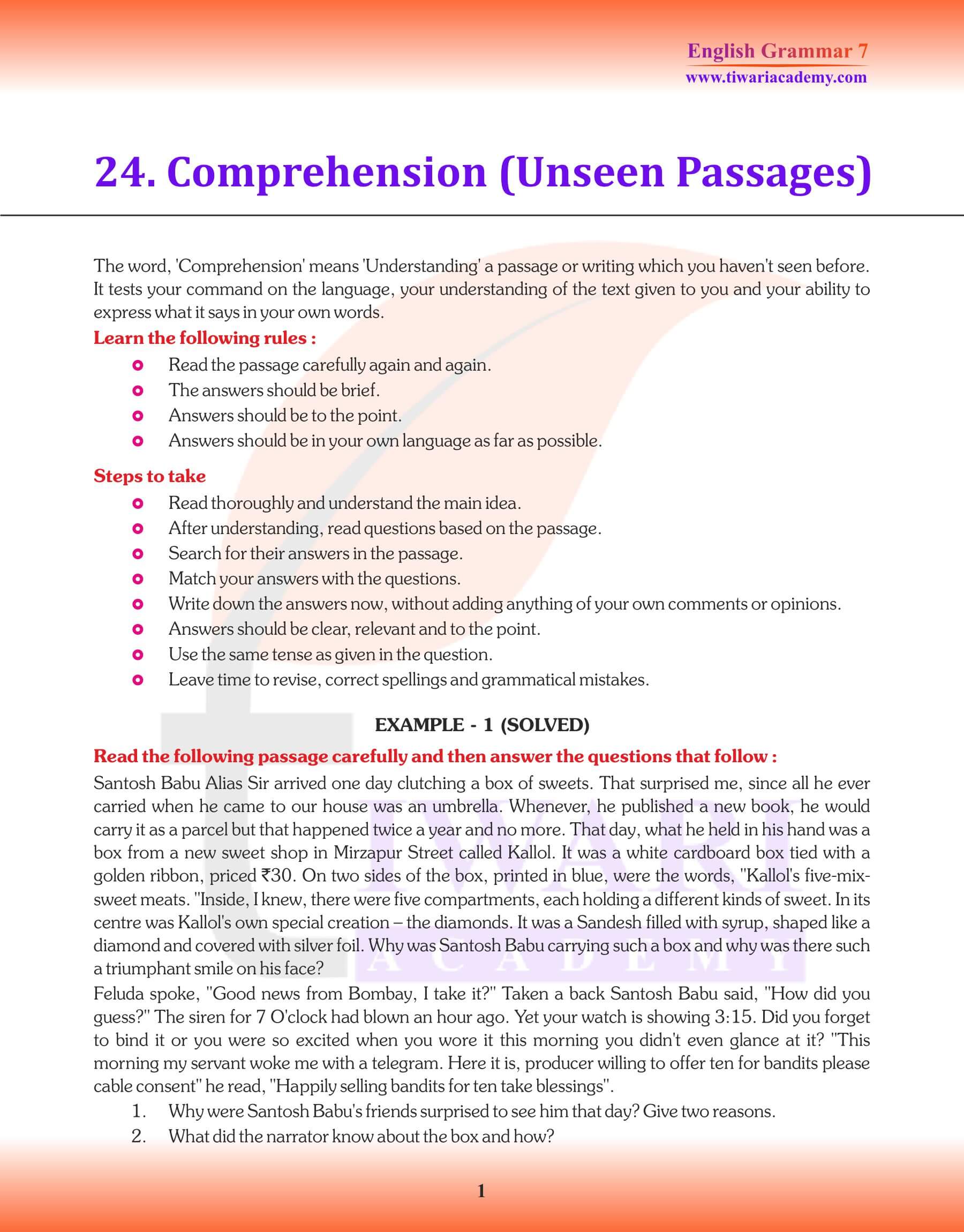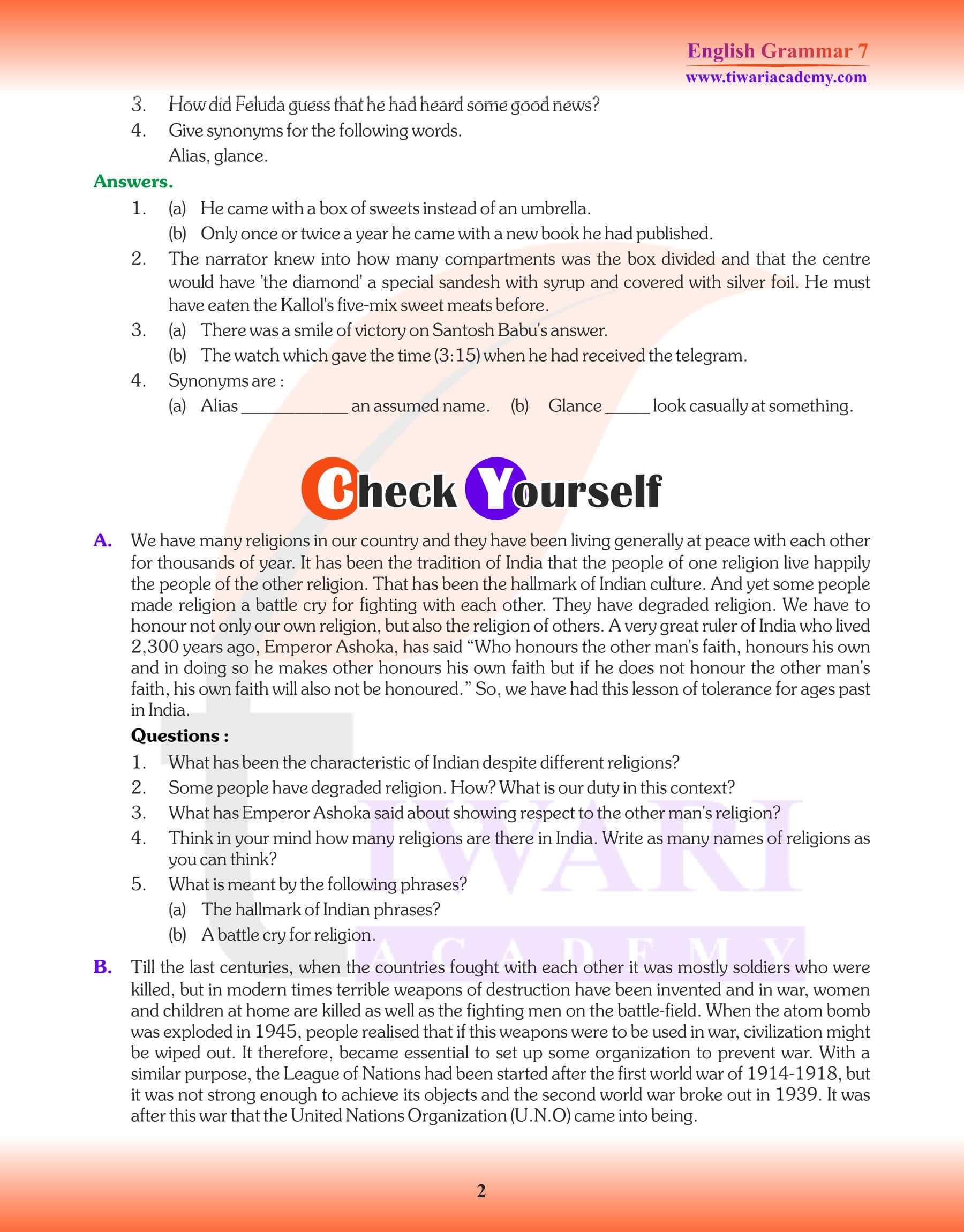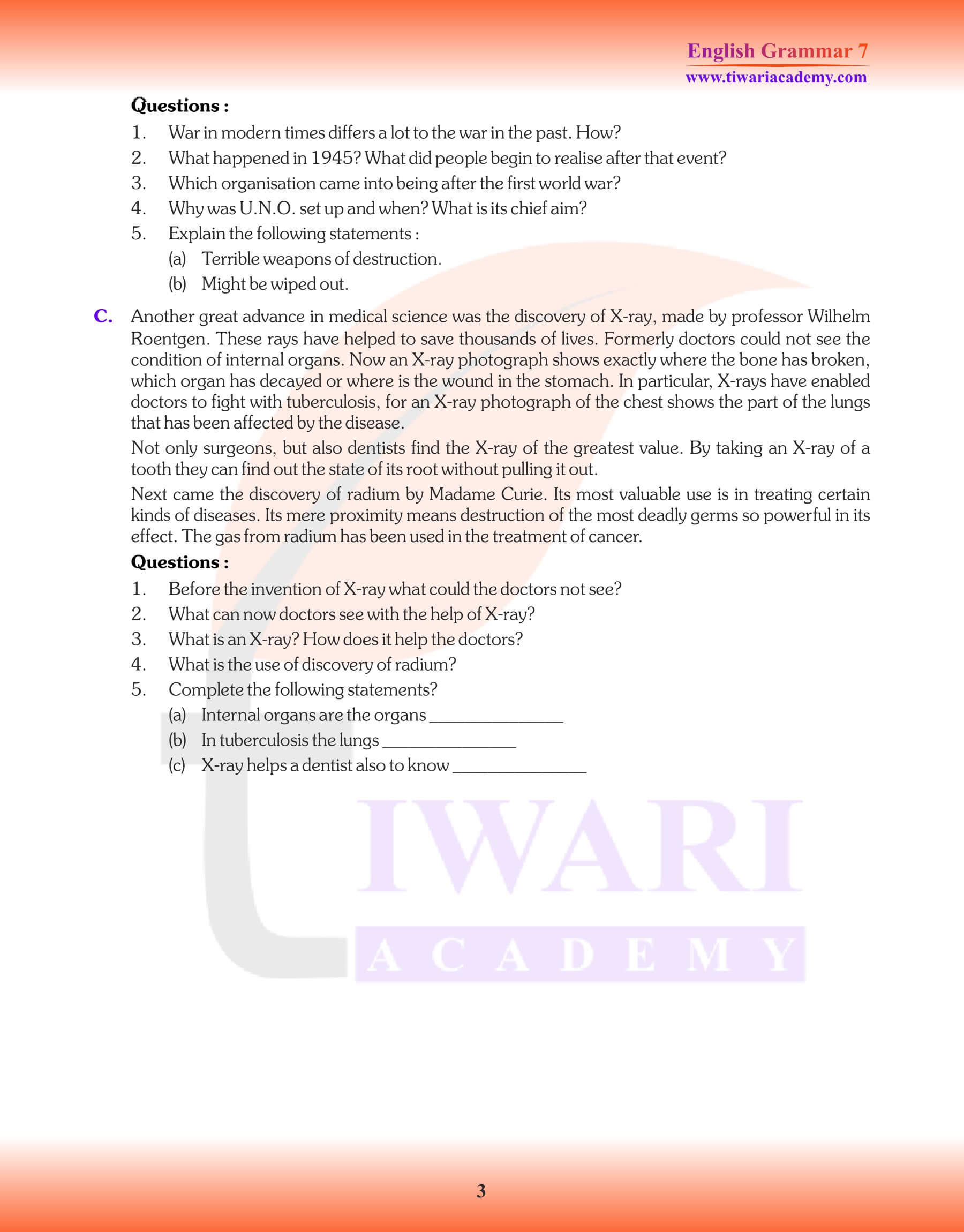Class 7 English Grammar Chapter 24 Comprehension or Unseen Passage. Comprehension is the noun form of Comprehend. To comprehend means to grasp mentally in order to have full understanding of a thing. Comprehension is a person’s power of understanding a given unseen passage. It is a very light exercise. The students should first grasp the sense of the passage, fully understand the nature of the questions and then answer the questions in their own words. The answers should be brief and to the point. Comprehension forms the basis of Precis-writing which in its turn leads to composition writing. Thus comprehension plays a very significant part in the mental development of the students learning English.
Delving into Chapter 24 of the Class 7 English Grammar syllabus, students are introduced to the pivotal skill of Comprehension, rooted in the word ‘Comprehend’. Truly understanding a text means mentally grasping its core essence, and that’s precisely what comprehension exercises aim to foster. Comprehension is more than just reading; it’s about understanding, analyzing, and deriving meaning from an unseen passage. For students, this isn’t merely an exercise; it’s a journey to develop a profound understanding of the English language.
| Class: 7 | English Grammar |
| Chapter: 24 | Comprehension or Unseen Passage. |
| Study Material: | Textbook and Revision Boot |
| Session: | 2025-26 |
Instructions to write the answers
- Read the passage carefully two or three times so that the theme of the passage may be understood.
- Read the questions carefully and underline the relevant portions of the given passage which you feel should be the most suitable answers.
- Now write answer to the questions in simple, easy and current language.
- Remember that the answers should be your own composition. Do not try to copy the very words of the passage.
- The answers must have sound grammatical construction. Great care should be taken in the use of punctuation also.
- Several answers should not be put in the same paragraph. Each answer should be written in a separate paragraph and should have its number corresponding to that of the question.
At the heart of comprehension lies the ability to discern the true meaning of a text. Students are encouraged to immerse themselves in the passage, ensuring they capture its nuances and overarching themes. Answering the subsequent questions demands a synthesis of this understanding, and students should prioritize brevity and precision in their responses. Answers need to be concise, reflecting a genuine grasp of the content, while also being articulated in the student’s unique voice.
Unseen Passage 1
A giant in stature, with long hair, wearing a bottle green fur lined overcoat and round seal skin cap on his head, Oscar Wilde arrived in New York on 2nd of January 1882 on a lecture tour. He was mobbed by reporters who asked him (much to his irritation) unimportant questions such as how he liked his eggs fried? How he trimmed his finger nails? And what temperature he preferred his bath to be? His answers showed a total lack of interest.
However, when he stepped ashore, the customs official asked, “Have you anything to declare?” and with customary style. Wilde replied, “No, I have nothing to declare (pause) except my genius.” Few remarks in history have travelled as widely and as quickly as that one.
Questions for Practice
- Mention two details of Oscar’s physical appearance when he came to New York?
- Why did he come to New York?
- Oscar Wilde was not interested in answering the questions of reporters. Why?
- What does Oscar Wilde’s answer to the custom officer’s questions show?
- Find a word in the passage which means “exceptional ability in a person”.
Answers of Passage 1
- He was so tall that he looked like a giant. Secondly, he had long hair.
- He came to New York on a lecture tour.
- Oscar Wilde was not interested in answering the questions of reporters because they asked him unimportant questions.
- The answer shows his wit and sense of humour.
- Genius
Moreover, comprehension is the stepping stone to more advanced English skills. It lays a robust foundation for precis-writing, ultimately guiding students towards the realm of composition writing. In the broader educational landscape, comprehension exercises are not mere tasks but tools for holistic mental development, enhancing students’ analytical capabilities and deepening their relationship with the English language.
Unseen Passage 2
Eskimos live in the polar areas. They are not usually tall but they have powerful legs and shoulders. They have a common language and can understand members of another group although they may come from many thousands of miles away. Marriage is by mutual consent. They do not have a special marriage ceremony. Eskimos live by hunting and fishing. The Eskimo snow house, which is called igloo, is very well-known, but in fact, Eskimos usually live in houses made of wood and turf. When they are not hunting and working, Eskimos like to carve. They use ivory and wood and they often make very beautiful objects.
Questions for Practice
- What do the Eskimos look like?
- How does a common language help them?
- How do they earn their living?
- What activities do they engage in during their spare time?
- Mention the two types of houses Eskimos live in.
- Find a word from the passage the means “agreement”.
Answers of Passage 2
- The Eskimos are not tall, but they have powerful legs and shoulders.
- They can understand members of another group who may be living thousands of miles away.
- They earn their living by hunting and fishing.
- They carve and make beautiful things using wood and ivory during their spare time.
- They have snow-houses called “igloo”. But usually they live in houses made of wood and grass.
- Consent.
